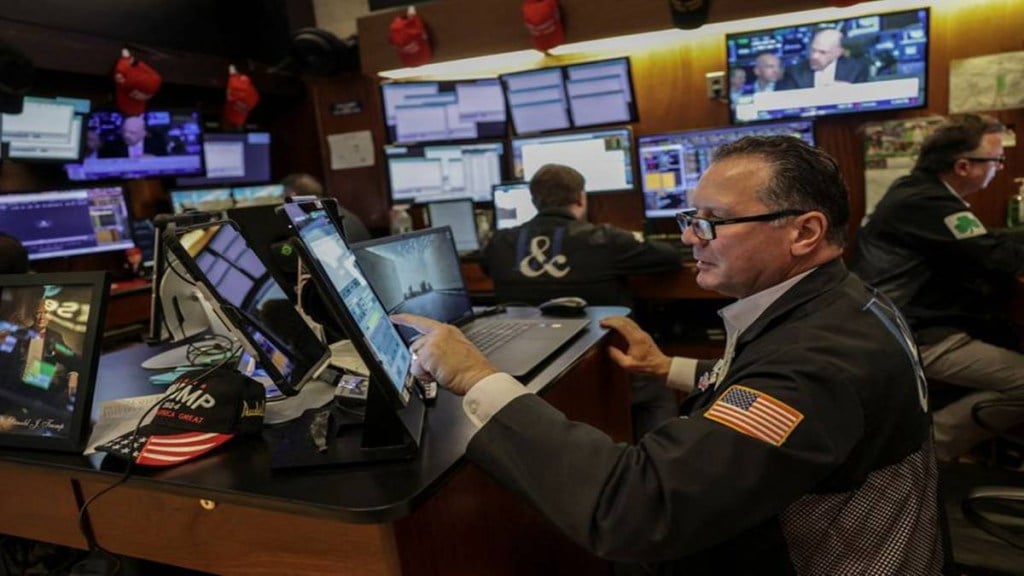The United States stock market made a stunning comeback on Monday (August 4), adding over $1 trillion in market value as investor sentiment turned sharply positive. The Dow Jones Industrial Average surged by more than 500 points, the S&P 500 rose 1.2%, and the tech-heavy Nasdaq gained 1.6% by afternoon trading.
The unexpected rally was sparked by the release of weaker-than-anticipated labour data. The US economy added only 73,000 jobs in July, far below Wall Street’s expectations. Even more concerning were the revisions to previous months’ data, which slashed 258,000 jobs from earlier estimates. It marked the sharpest downward revision since 1968.
Despite the disappointing numbers, markets reacted with enthusiasm. The slowdown in hiring boosted expectations that the Federal Reserve would soon begin cutting interest rates, possibly as early as September. According to the CME FedWatch tool, traders now see an 85% likelihood of a rate cut next month, with up to 100 basis points of easing expected by the end of 2025.
Corporate earnings and dip buying drive optimism
Strong corporate earnings and strategic dip buying also contributed to Monday’s rally. According to Goldman Sachs, over 80% of S&P 500 companies have beaten earnings estimates this season, helping to restore investor confidence after last week’s sell-off.
Sectors that had borne the brunt of recent declines, particularly technology, saw a significant rebound. High-growth stocks such as Nvidia, Microsoft, and Apple led the way, buoyed by stable earnings outlooks and strong demand in artificial intelligence and cloud services.
Meanwhile, Palantir, the American software company, continued its rise and is now the S&P 500’s year-to-date leader, while IDEXX Laboratories posted the day’s biggest gain.
Trump fires BLS chief, raises pressure on the Fed
Adding a political dimension to the economic developments, President Donald Trump dismissed the Commissioner of the Bureau of Labour Statistics over the weekend following the jobs data release. The move raised fresh concerns about the independence of key economic institutions.
In a separate development, Fed Governor Adriana Kugler announced her resignation, fuelling speculation that the Trump administration is seeking to reshape the Federal Reserve’s leadership. Trump has repeatedly called for aggressive interest rate cuts, framing them as necessary to support American households and economic growth.
Tech and AI continue to lead the charge
Technology stocks were among the biggest beneficiaries of Monday’s rally. Investors are banking on the sector to outperform as borrowing costs drop and AI momentum builds.
Apple: Up over 2%, holding strong near $203/share with a market cap above $3 trillion.
Microsoft: Gained 2.3%, bolstered by Azure growth and AI investments.
Nvidia: Rose 3% as it continues to dominate in AI chip manufacturing.
Alphabet: Continued trading near $195/share, with strength in YouTube, cloud, and advertising.
Bonds, gold and oil
The weak payroll figures also had a major effect on other financial markets. Treasury yields dropped, particularly on the 2-year note. Gold surged to a new all-time high above $3,400 an ounce, as the dollar weakened and investors sought safe-haven assets. Citi analysts have now raised their outlook for gold, predicting prices may reach $3,600/oz if rate cuts materialise and global uncertainties persist.
On the other side, crude oil prices dipped after OPEC+ announced plans to raise production in September. The move is expected to cool prices at the pump but weighed on energy stocks, which underperformed the broader market.
What investors should watch next
Markets will closely monitor a range of upcoming economic indicators, including factory orders and weekly jobless claims, which could confirm whether the labour market slowdown is more than a blip.
Investors are also tracking:
- Ongoing corporate earnings results, with strong beats supporting equity valuations.
- The performance of AI and tech stocks, which remain at the centre of market momentum.
- Political volatility, as Trump’s influence over the Fed and economic policy intensifies in the lead-up to the 2026 midterm elections.

